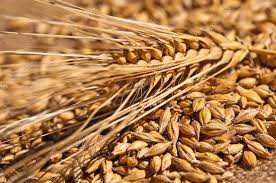Hordeum Vulgare L., (Yavakshar, Ash of barley)

Botanical Name :- Hordeum vulgare L., (Yavaksha, Ash of barley)
Family :- Poaceae.
Synonyms:- Hordeum sativum Jess. Frumentum hordeum E.H.L.Krause, Frumentum sativum E.H.L.Krause, Hordeum bifarium Roth, Hordeum coeleste (L.) P.Beauv., Hordeum hexastichon L., Hordeum tetrastichum Stokes.
Regional Name :- English : Barley, Hindi : Yay, Jav, Jau, Sanskrit : Divya, Urdu : Jau, Bengali : Jab, Jau, Yava, Gujrati : Jau, Java, Jau, Kannada : Jave godi, Barli Akki, Malayalam : Yavam, Baarli, Barley, Marathi : Jav, Oriya : Jav, Javadhana, Yava, Bansa, Punjabi : Jav, Jau, Tamil : Barliarisi, Yavam, Telugu : Yavalu, Barlibiyam, Tella Tumma, Barley.
Description :- It is an annual, erect, herb, 50 to 100 cm high, cultivated chiefly in North India, for its de husked fruits known as Barley in trade. Fruits are caryopsis, elliptic, oblong, ovoid and tapering at both ends; smooth, about 1 cm long and 0.2 to 0.3 cm wide; dorsally compressed and flattened on the sides with a shallow longitudinal furrow; 3 to 5 ridged having shallow depression between them; grains tightly enclosed and adhering to the lemma and palea; a long awn present on the palea; pale greenish-yellow; taste, sweetish acrid.
Part Used :- Husk.
Phytoconstituents :- The main chemical constituents are Proteins, Carbohydrate, free Amino-acids, Vitamins, Tannins and Flavonoid glycosides-Luteolin and Orientin. It is also contains the phenolics Caffeic acid and p-coumaric acid, the ferulic acid 8,5'-diferulic acid, the flavonoids catechin-7-O-glucoside, saponarin, catechin, procyanidin B3, procyanidin C2, and prodelphinidin B3, and the alkaloid hordenine.
Ayurvedic Properties :- Rasa : Madhura, Guna : Ruksa, Mrdu, Aguru, Virya : Sita, Vipaka : Katu, Karma : Kaphapittahara, Lekhana, Medohara, Medhyavardhaka, Svara, Vardhaka, Vatahara, Vrsya, Vrna Vardhaka.
Ayurvedic Applications :- Kasa, Pinasa, Svasa, Urusthambha.
Medicinal Uses :- It is used for cancer (stomach and uterus), and abdomen tumors, bronchitis, burns, catarrh, chest, chilblains, cholecystosis, cholera, cough, debility, diarrhea, dyspepsia, fever, measles, inflammation, phthisis, puerperium, sores, and urogenital ailments. It is also used as a poultice for burns and wounds.
Contact Us
Govind Madhav Herbal Tea
B 29-30, Hari Nagar,, Delhi - 110064, India
Call Us : View Mobile Number
Phone : +91-11-45615006
E-mail : govindmadhavtea@gmail.com
